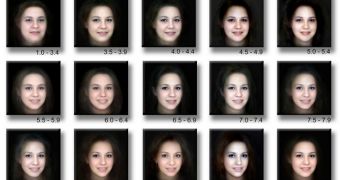For most of us, staring in a window or mirror and recognizing our own face is something that we do automatically, and therefore many take this for granted. However, there is a small group of people that tend to fail in recognizing themselves, and these individuals suffer from a condition known as acquired prosopagnosia (AP). Basically, sufferers are unable to recognize the faces they see, even their own. This condition most often occurs after a violent trauma to the head, and researchers are still struggling to understand it fully, AlphaGalileo reports.
According to a paper published in the latest issue of the respected scientific journal Cortex, this condition may be tightly linked to the sufferers' inability to process faces as a whole (holistically). In previous investigations, it was demonstrated that people suffering from the condition had difficulties in analyzing the region around the eyes on the face of people they saw. Others experienced a distorted perception of distances between facial features, but the new work is the first to tie the two together. Furthermore, the Cortex study also showed that these were not causes, but symptoms, of the inability to look at faces holistically.
The new work was conducted by Belgian experts Meike Ramon and Dr. Bruno Rossion, who are both based at the Universite de Louvain. They investigated the condition in a 59-year-old kindergarten teacher, who had suffered from a severe head injury in 1992. They say that the lady is one of the few pure cases of acquired prosopagnosia in the entire world. The researchers also focused on a number of other patients suffering from the same condition, who were asked to take part in a few experiments.
The work revealed that people suffering from AP are unable to process several features of the face in parallel, and that this is one of the main reasons why even faces of people in their families appear as strange to them. They “apply a locally restricted, serial processing style, which is particularly inefficient for certain types of information,” the experts say. The new study “does however shed light on what makes normal face recognition so overwhelmingly efficient: our capacity to simultaneously integrate the multiple facial elements into a unique representation,” Ramon says.

 14 DAY TRIAL //
14 DAY TRIAL //